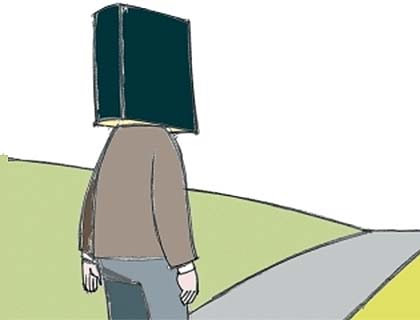Religiosity has no definition. Living for a truth to dying for a lie could all be religiosity. On the one hand, it is as clear as what we see happening at homes, in worship places, and on streets during festive days and nights; on the other hand, it is as hazy and ambiguous as what its effects are. And there is no better place to fish than in hazy waters.
Hyperreligiosity is an extreme and disproportionate display of already very ambiguous religiosity, whereby psychologically, a person experiences intense religious beliefs or episodes that interfere with normal personal and social functioning. Collective or group hyperreligiosity, looking at its manifestations, is hyperreligiosity multiplied by the population of India. Here in India mass religiosity is triggered by the vocal force of one or a few, to shocking propositions. Here people kill, or even are ready to die, which have nothing to do with truth or falsehood, or needs nothing in particular to kill or to die for.
Our ego gets tickled by numbers, crowd, and size: bigger the crowd and higher the noise, greater the ego feels. Jesus, though had crowds following him, was not a great admirer of large crowds. Once when he saw a large crowd (Mathew 9: 36) he felt pity for them, for they were like sheep without a guiding spirit or individuality and critical mind, and were easily swayed by manipulation. Another time he had a large crowd around him was when he was led to be crucified by the brute forces of religion and political power. Be warned of the danger of becoming a crowd. A crowd might perform a lot of things, but a crowd has no conscience, and is not critical or spiritual. They are part of activities and public life without personally processing anything. Psychology calls it mass psychosis, where every individual while in a crowd of people behaves the same way, but if they are alone they don’t think or behave that way; or mass hysteria, where every individual while in a crowd exhibits same symptoms, but test them alone, they don’t have those symptoms.
Religion: The Land of Dreams and Opportunities
We seldom see beggars sitting at the gates of multinational corporate buildings, which actually have all the money, and begging; but they comfortably come to the gates of temples, mosques, and churches. We often not see priests and god men, who take upon themselves the burden of justice and truth, speaking up or standing for when the world is at war, or at times of national or local policy making; instead at the time of peace and quiet, from the safety of the sanctuary and the unknown, sell reconciliation, fairness, and kingdom of god. Politicians, though having all the powers, don’t barge in and exercise power in a business establishment without due processes and consultations; but kings and politicians have exercised power in the affairs of churches, mosques, and temples. This space of the unknown is a land of dreams for all. For some it is an easy place of getting their daily share of aid; for some it is a place of selling people mysteries and doctrines, which often have no reason, rhyme, or objectivity; for some it is a magic pool that could be stirred at their will and whimsy to get patronage and backing, and of course, votes. Religion, the realm of the unknown, benefits all in many known and unknown ways. It is no big surprise that religion has survived and is thriving for the longest of time; and it is not going to disappear anytime soon.
Looking historically at the life and practices of varied religions, especially institutional religions, they prefer patriarchy, favours hierarchy, and is soft on irrationality. This nature of religion makes it a brute force to handle. Religious fundamentalism by the majority and harnessed by political powers easily becomes a gory display of collective hyperreligiosity. The crowd becomes a performing monkey that many leaders use to their advantage.
Be it Christianity, Islam, or neo-Hinduism, the danger lurks within; if it is not able to evolve to be relevant to modern times and modern thinking by leaving stubborn patriarchy, rigid hierarchy, and dooming irrationality, it must leave the stage. Collective hyperreligiosity is a fire that can devour us; it may seem, like the preverbal frog in the slow-boiling water, heart- warming in the beginning, but fan it to a full flame it will devour us. Somebody has to call it a pause, and start firefighting. Unchecked collective hyperreligiosity, like the nuclear arms race, is not an area we must compete to be the first, for fire does not discriminate.
Written as TOGETHER editorial.

Comments
Post a Comment